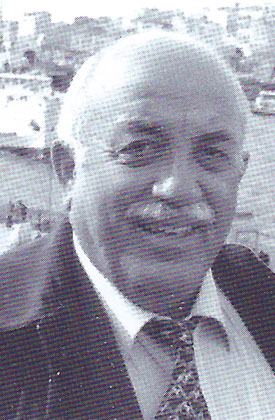
Kat Teuçej
Kat Teuçej was born in Gabukay, a Çerkes village of Krasnodar Krai (Russia) in 1945. He studied in the Faculty of Art-Graphics at Kuban State University (1964-1969) and the State Art Academy of Tbilisi (1970-1974). He was elected member of the USSR Union of Painters (1977). He was granted the art and literature award on behalf of N. Ostrovskiy of Krasnodar region in 1982 and the contribution to the aesthetics education of the youth award (1982).
He won the "Miklosh Kaplar" painting award the same year (Hungary). He chaired the Adygea Society of Painters between 1990-1992 and won the title "Honorable Artist" of the Republic of Adygea in 1993 and the "Honorable Artist" of the Russian Federation in 1997. He was elected member of the Society of Painters of Georgia and the Union of Russian Writers in 2007. The same year, he was entitled "People's Artist of the Russian Federation" and in 2008 he was entitled "Honorable Citizen of the Teuçej Region." He was deemed worthy of the title "State Prize in Art" in 2009. He currently lives in Maykop, capital of the Republic of Adygea under Russia.
The unique styles, subjects, philosophies and symbols integrate into a whole of the works of Kat Teuçej, the people's artist of Russia. Spiritual and natural beauty is treated with a convincing style out of free and effusive brushstrokes.
Kat Teuçej is a well-known name in Russia, in the former USSR states, Middle Eastern countries and Europe. The works of Teuçej reflect the complex process of cultural development in the Cherkes culture in the first half of the 20th century and the beginning of the 21st century. Teuçej Kat states that he attempts at depicting all the dimensions of the existence of human beings; life and death, traditions and customs, work and leisure in his paintings through various techniques including watercolor, oil painting, gouache and graphics. A frequent traveler, Teuçej painted his impressions of "Jordan", "Bulgaria," "Kalmykia", "Hungary" and "Adygea". One of the main areas of focus in his art is the landscape of his home, the Gabukay village. Teuçej has used Cherkes fairy tales extensively in his exhibitions. Some of those are magical and mystical myths, some of them are heroic tales and some others are tales of daily life. In his works of satire and irony, he uses human weaknesses such as greed and treason, ideas and images from epic poetry in his heroic descriptions, celebrating diligence, intelligence and beauty.